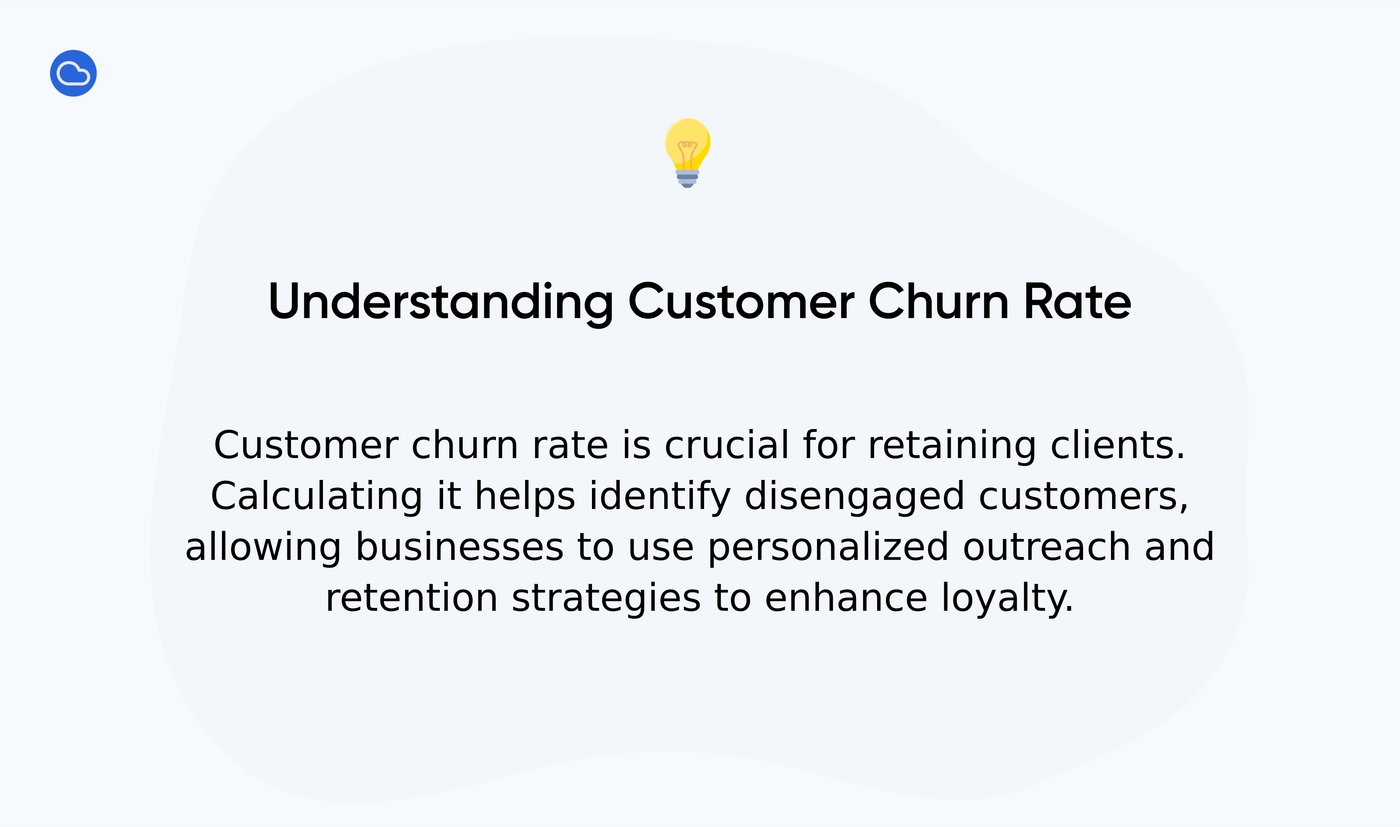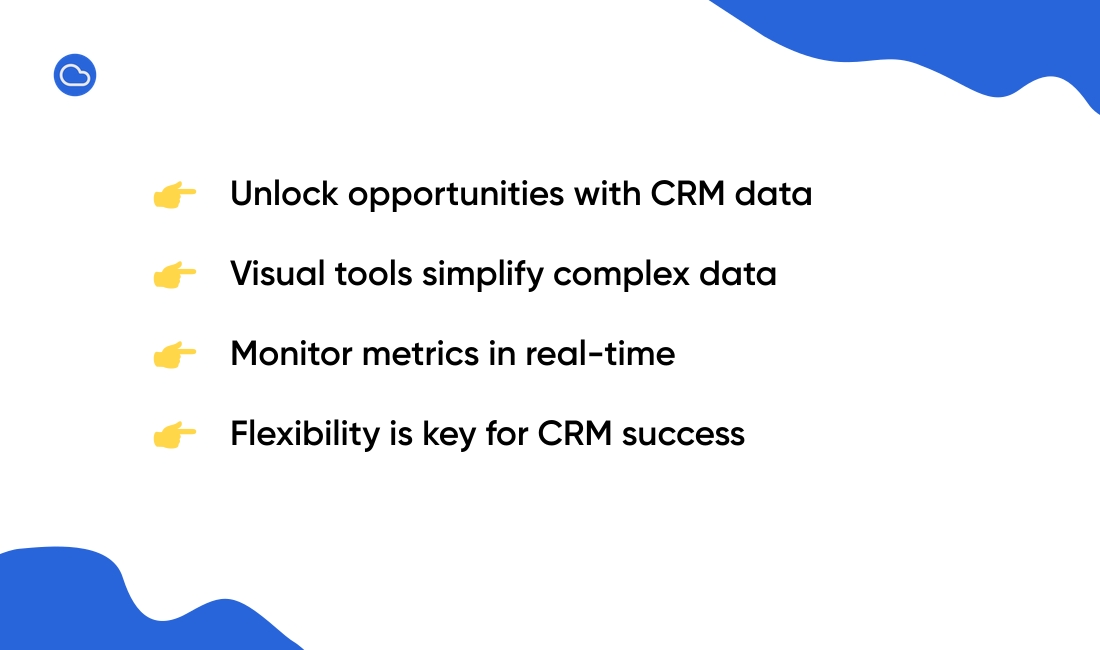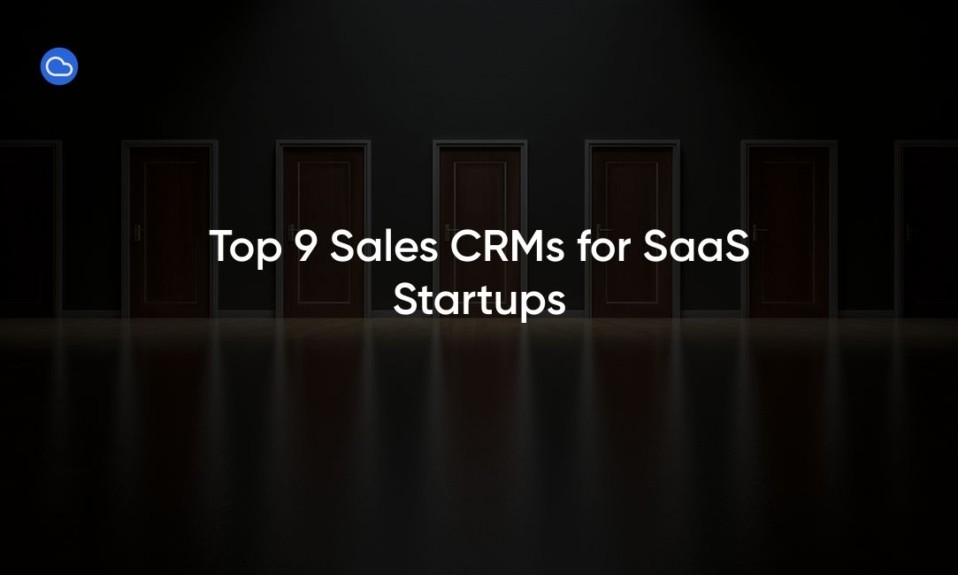How do you know which CRM metrics actually drive business growth? (Hint: Your dashboard’s prettiest chart might be useless.)
Teams often track vanity metrics that look impressive but don’t improve customer relationships or revenue.
Identifying what CRM metrics matter most bridges the gap between data overload and strategic decision-making.
This guide breaks down the essential measurements that reveal true CRM effectiveness – no fluff, just actionable insights.
You’ll learn to calculate customer lifetime value, optimize acquisition costs, slash churn rates, and leverage sales pipeline analytics that directly impact your bottom line.
We’ll also show how benchmarking against industry standards turns raw numbers into competitive advantages.
Why CRM Metrics Are Important
CRM metrics significantly influence your business decisions. They provide the data essential for shaping effective strategies.
Focusing on these metrics helps you understand customer behavior and preferences, leading to better engagement. It’s like having a crystal ball that actually works!
Investing in CRM tools allows for precise data tracking. The most successful businesses prioritize analyzing this data to drive growth.
With the right CRM metrics, you can measure the return on investment from customer relationship initiatives. Have you considered how much guesswork you’re eliminating with proper tracking?
-
Enhanced decision-making based on real customer data
-
Better resource allocation across marketing channels
-
Improved customer satisfaction through targeted improvements
-
Increased team accountability with measurable results
Dashboards provide a visual representation, making it easier to identify trends and areas for improvement. I’ve found that when teams can actually see the data, they’re much more likely to act on it.
Focusing on important CRM metrics fosters a data-driven culture within your organization. When teams base decisions on concrete evidence, you increase accountability and promote collaboration.
Every measurement tells a story about your customers and services. Understanding these stories can help you anticipate needs and exceed expectations.
Tracking key performance indicators transforms your approach to customer relations. As you dive deeper into data analysis, each insight discovered can lead to opportunities for growth.
Essential CRM Metrics for Business Success
Customer Lifetime Value (CLV)
Calculating Customer Lifetime Value offers valuable insights into the long-term worth of your customers. This metric helps prioritize high-value segments, enabling targeted marketing efforts that resonate deeply.
To determine CLV, take the average purchase value, multiply it by the number of transactions, then factor in customer lifespan. The result reveals how much each customer contributes to your business over time.
|
Customer Segment |
Avg Purchase Value |
Annual Purchases |
Customer Lifespan |
CLV |
|---|---|---|---|---|
|
Premium |
$250 |
6 |
5 years |
$7,500 |
|
Standard |
$100 |
4 |
3 years |
$1,200 |
|
Basic |
$50 |
2 |
2 years |
$200 |
I’ve seen firsthand how understanding CLV can change business strategies. When analyzing customer data, we discovered that our most valuable customers made frequent repeat purchases.
This realization prompted us to tailor our marketing to engage and reward these segments effectively. Well, knock me over with a feather – focusing on high-value customers actually optimized resources and enhanced growth!
Monitoring CLV isn’t just about numbers; it’s about forging stronger relationships with customers. You might be surprised by the trends you uncover.
Embracing CLV empowers your marketing to align with what matters most: meaningful connections and sustainable revenue. For further insights, check out this guide on customer engagement metrics.
Customer Acquisition Cost (CAC)
Understanding Customer Acquisition Cost is essential for making informed business decisions. This metric represents the total cost of acquiring a new customer.
It includes marketing expenses, sales expenses, and any other costs directly related to gaining customers. I’ve seen firsthand how tracking this metric can clarify whether our strategies deliver meaningful returns.
Calculating CAC involves dividing all costs associated with customer acquisition by the number of customers gained in that period. Let’s say you spent $10,000 on marketing and gained 100 new customers. Your CAC would be $100.
Are you comparing your CAC against your Customer Lifetime Value to ensure profitability? If your CLV is higher than your CAC, your investment is likely paying off.
Continually monitoring CAC allows you to refine your strategies. Keeping an eye on this metric ensures you’re not overspending on acquiring customers.
You might find that some channels perform better than others. Truth be told, this discovery alone can save you thousands in misallocated marketing dollars.
Identifying these strengths helps in optimizing your marketing efforts. At our company, tracking this metric has shaped our growth strategy.
Being proactive in managing acquisition costs can lead to sustained business success. Focus on CAC to ensure you’re on the right track toward profitability.
Conversion Rate
Tracking conversion rates tremendously impacts how you optimize your sales funnel. Knowing the percentage of leads that become customers provides invaluable insights.
This critical metric highlights how well your marketing and sales efforts translate into actual business. A strong conversion rate can indicate effective messaging and a smooth customer journey.
You can track your conversion rate through various methods. For instance, integrate tools that monitor user interactions and lead progression.
-
Website visitor to lead conversion
-
Lead to qualified opportunity conversion
-
Opportunity to closed deal conversion
-
Email campaign response rates
These tools offer data that reveals hotspots for further engagement or areas needing refinement. Understanding where prospects drop off can help you optimize for better results.
In my experience, focusing on customer feedback has been key. Feedback often uncovers the nuances influencing conversion, whether it’s a cumbersome sign-up process or unclear messaging.
Taking action on this feedback can lead to significant improvements. For anyone looking to enhance their conversion rates, consider reviewing your customer communication strategies. It can make a substantial difference.
Customer Churn Rate
Understanding customer churn rate is vital for any business aiming to retain customers and foster loyalty. To calculate it, you can use the formula: (Customers lost during a period / Total customers at the start of the period) x 100.
This metric reveals not only how many customers you’re losing but also helps identify at-risk accounts. Think of it as your early warning system for customer satisfaction issues.
I’ve seen firsthand how recognizing the signs of churn early can make a significant difference. For instance, analyzing customer behavior patterns can highlight those who are disengaging.
By actively reaching out to these customers through personalized communication, businesses can often reignite their interest and reduce churn. Sometimes, a simple “Hey, we noticed you haven’t been around lately” can work wonders.
Implementing effective retention strategies remains crucial. Offering targeted incentives or gathering feedback through surveys provides valuable insights.
Addressing concerns promptly can turn potential losses into opportunities for strengthening customer relationships. At our company, we prioritize understanding these metrics to enhance our approach and serve you better.

Net Promoter Score (NPS)
Net Promoter Score serves as a powerful tool for assessing customer satisfaction and loyalty. Businesses gather insights by asking clients how likely they are to recommend their services.
This simple question reveals much about customer sentiment and overall brand perception. I firmly believe that utilizing NPS surveys can truly guide your strategy toward improvement.
Understanding NPS begins with its calculation. Customers respond on a scale from 0 to 10. Those who score 9-10 are promoters, 7-8 are passives, and 0-6 are detractors.
The scoring formula subtracts the percentage of detractors from promoters, resulting in a number that can range from -100 to 100. Higher scores indicate greater loyalty and satisfaction.
Many organizations leverage NPS to enhance the customer experience. Analyzing feedback allows teams to pinpoint areas for growth. What would your customers say if you asked them right now?
You can implement targeted initiatives based on NPS insights. For instance, if promoters express delight about a specific feature, doubling down on that can generate more word-of-mouth referrals.
I’ve seen firsthand how effective this strategy can be for engagement and retention, creating loyal customers eager to refer others. It’s like striking gold when you find what truly delights your customers.
Sales Performance Metrics to Track in Your CRM
Tracking key sales performance metrics is vital for understanding your team’s effectiveness and pipeline health. You want data that speaks to how well your sales process operates.
It’s about fine-tuning your approach; small adjustments often lead to significant improvements in results.
One key metric is the Sales Conversion Rate. This indicates the percentage of leads that evolve into actual sales. Monitoring this helps identify potential roadblocks within your sales funnel.
I’ve found that focusing on conversion rates can significantly boost your sales strategy. Identifying trends in conversions reveals where to optimize your efforts.
Another important measure is the Average Deal Size. Knowing how much each deal typically brings can influence your forecasting substantially. It allows for better resource allocation and helps set realistic targets for your team.
I’ve seen businesses transform just by understanding this metric and setting goals accordingly. You can empower your team to focus on more substantial deals, potentially increasing revenue.
-
Lead Response Time – How quickly your team follows up with new leads
-
Sales Cycle Length – Average time from first contact to closed deal
-
Win Rate – Percentage of opportunities that result in closed deals
-
Sales Activity Metrics – Calls, emails, meetings per rep
-
Pipeline Velocity – How quickly deals move through your sales stages
The Sales Cycle Length tells you how efficiency within your process. If deals take significantly longer than usual, it might indicate issues that need addressing.
Monitoring this can enhance your workflow, streamline communication, and improve outcomes. After all, time is money in sales!
Lastly, keep an eye on Lead Source Performance. This metric helps identify where your most valuable leads come from. Is it social media? Referrals?
Understanding this can help you allocate your marketing resources effectively. We continuously analyze source performance to ensure we channel efforts where they matter.
By focusing on these metrics, you create a solid foundation for sales success. It transforms vague goals into clear, actionable insights.
Analyzing these figures makes it easier to address challenges and optimize your approach. Dive deep into your CRM data, and watch how it transforms your sales process.
How to Measure CRM Success
Assessing the success of your CRM system involves evaluating its impact on your business through various measurable outcomes. A solid framework lays the groundwork for continuous improvement.
Focus on several key metrics that tell you how well your CRM performs. Without proper measurement, you’re just guessing whether your system is actually working.
Start with customer engagement metrics. Track how frequently customers interact with your brand. High engagement often translates to higher retention and sales.
Don’t overlook sales performance metrics. Look into sales cycle length and win rates to gauge the effectiveness of your sales processes. These numbers don’t lie!
Next, consider customer satisfaction scores. These outcomes provide insights into customer sentiment. A high NPS indicates loyal customers.
In my experience, actively responding to feedback helps improve satisfaction. Have you established a process for acting on customer feedback?
Another approach is benchmarking against industry standards. Understanding where you stand can highlight strengths and areas for improvement.
You can gain invaluable insights from analyzing competitive performance. Sometimes the grass really is greener, and you need to figure out why!
Implementing routine evaluations can reveal patterns in CRM data. Metrics such as Customer Lifetime Value (CLV) and Conversion Rates guide strategic decisions.
I’m pretty sure that consistent review leads to better alignment with client needs. In fact, the businesses I’ve worked with that regularly audit their CRM performance consistently outperform those that don’t.
In summation, a clear framework for measuring CRM success involves quantifiable outcomes, engagement metrics, and performance comparisons. Focus on these elements for a deeper understanding of your CRM’s effectiveness.
CRM Analytics: Turning Data into Actionable Insights
Analyzing CRM data can unlock opportunities and reveal challenges that affect customer relationships. You might ask how to turn raw data into something meaningful.
The process begins by identifying patterns within your data sets. Taking a closer look reveals insights that can drive remarkable changes.
I recently explored various CRM analytics tools, discovering how they present data visually. These visuals transform complex data into accessible formats.
This clarity allows you to identify trends quickly. As you dig deeper into analytics, you’ll find actionable insights that can enhance business strategies.
Utilizing CRM dashboards, you can monitor performance metrics in real-time. This practice not only helps in tracking progress but also highlights areas needing attention.
For instance, analyzing customer engagement trends can pinpoint when clients are at risk of churn. Intervening promptly can significantly improve retention rates.
Embracing CRM analytics involves being open to experimenting with different strategies. Testing various approaches allows you to determine which methods yield the best results.
If you ask me, flexibility in strategy is key to leveraging CRM data effectively. The “set it and forget it” approach is the kiss of death for CRM success.
What hidden patterns might be lurking in your customer data right now? Explore the vast potential of CRM analytics to make data-driven decisions.
Initiating discussions around your findings will foster collaboration within your team. Together, you can refine processes that enhance customer relationships and catalyze growth.
For a deeper understanding of CRM analytics, check out this insightful article on Shopify.

Benchmarking Your CRM Metrics
Measuring your CRM performance against the right benchmarks can transform your business strategy. You might wonder where your metrics stand compared to industry standards or your competitors.
Identifying these gaps reveals areas for improvement, ultimately enhancing your customer relationships. It’s like having a roadmap that shows exactly where you need to go.
I think it’s vital to regularly assess your CRM data. By comparing your metrics with historical performance, you gain valuable insights into trends and patterns.
This process not only shows how you’re progressing, but also highlights where adjustments can lead to greater efficiency. Are there specific CRM metrics you find especially revealing?
I personally believe that focusing on key performance indicators, like Customer Lifetime Value or Customer Acquisition Cost, makes a significant difference. These aren’t just numbers—they’re the pulse of your business relationships.
When assessing your CRM performance, utilize tools like dashboards to visualize data clearly. These tools streamline the benchmarking process, making it easier to track your progress over time.
Observing how you stack up against competitors can inspire innovative changes in your approach. Understanding your position in the market can fuel your growth strategy.
Joining a community of like-minded professionals can also enrich your benchmarking experience. Sharing insights and strategies fosters an environment where everyone improves together.
We believe in learning from each other’s successes and challenges. It’s this collaboration that helps us elevate our performance metrics and ultimately, our customer relationships.





